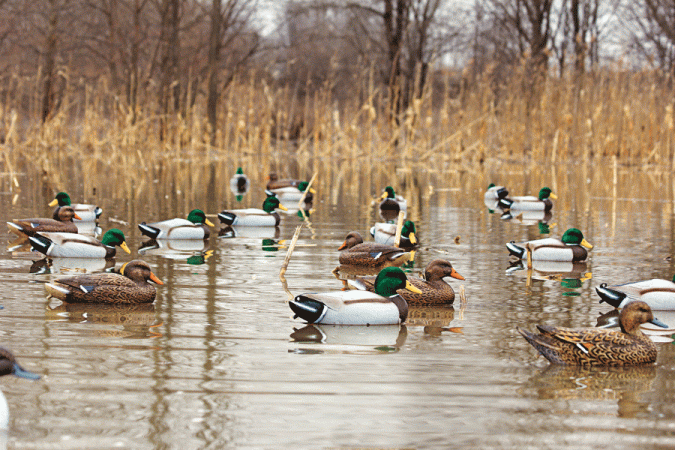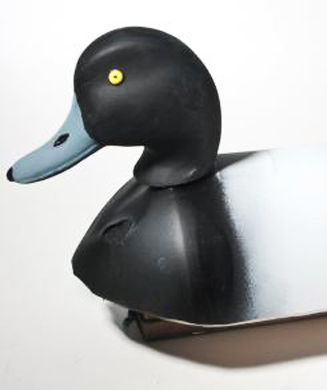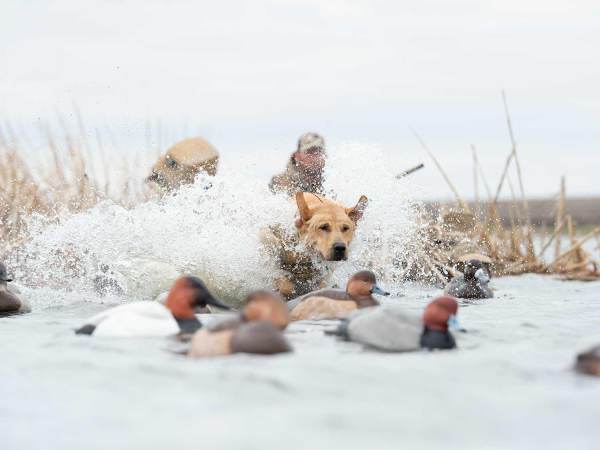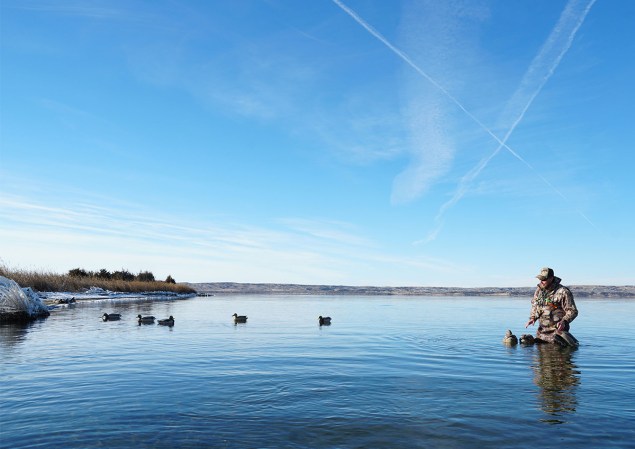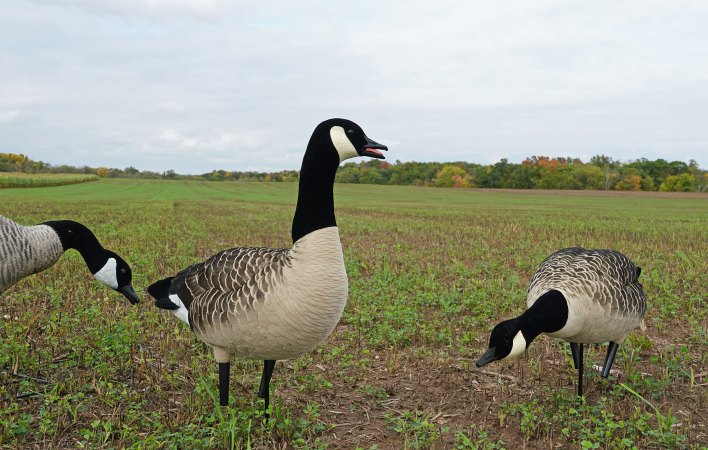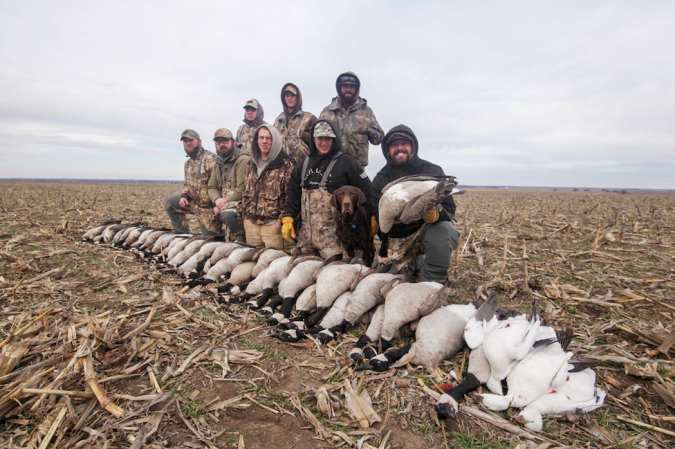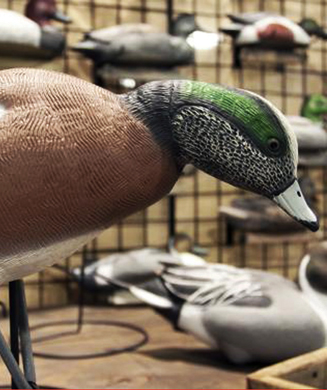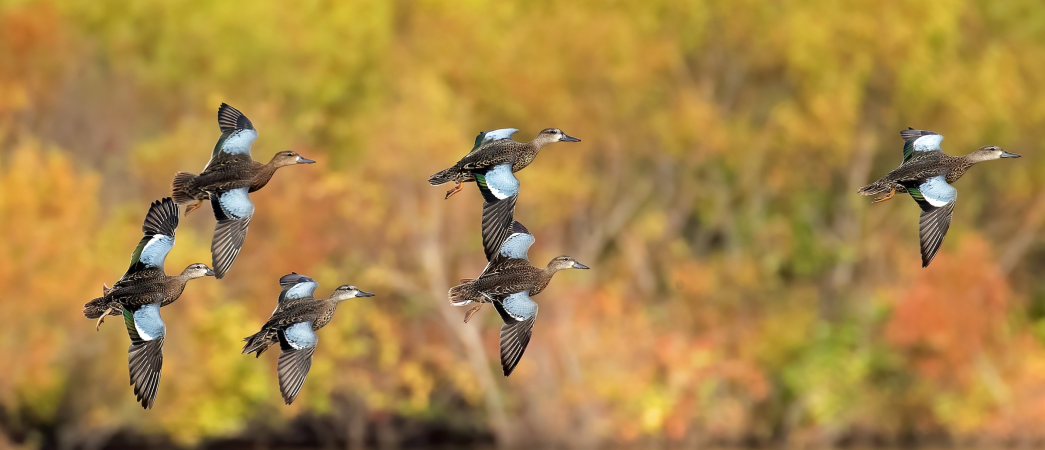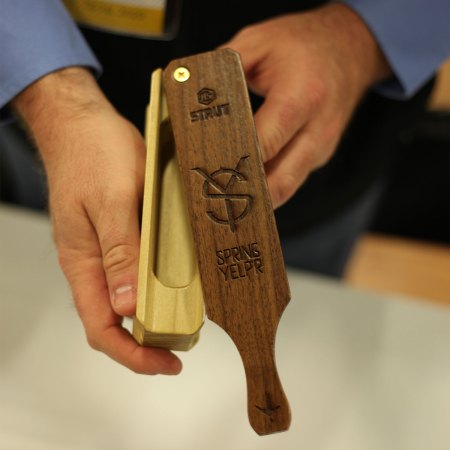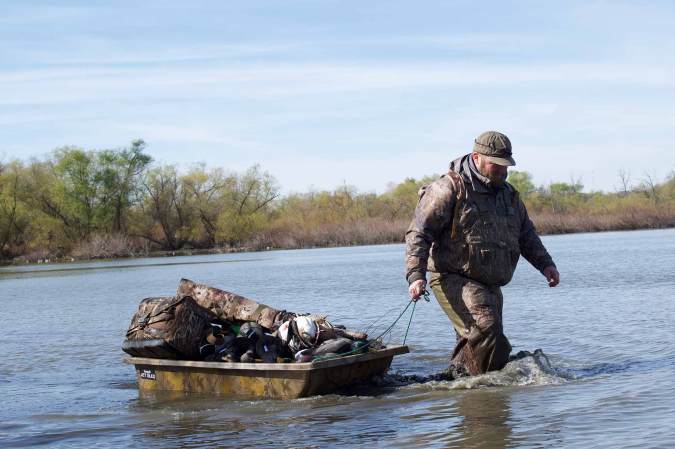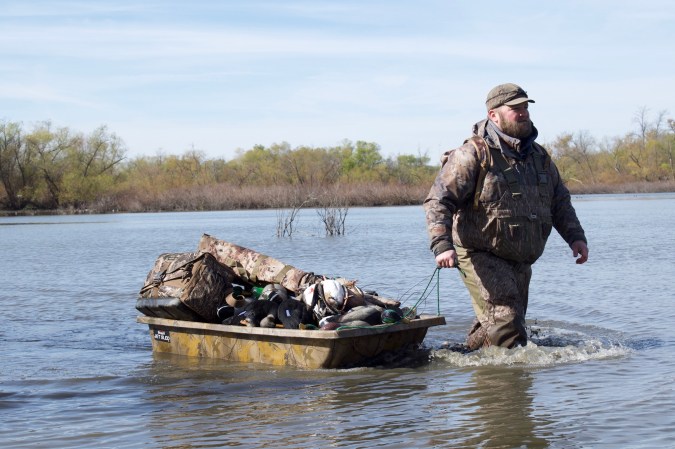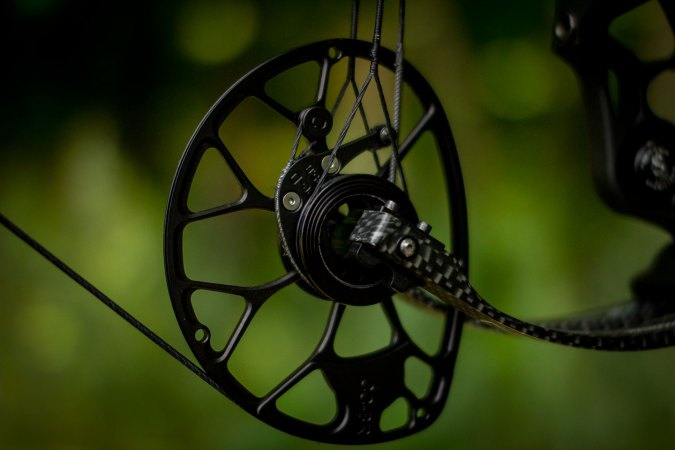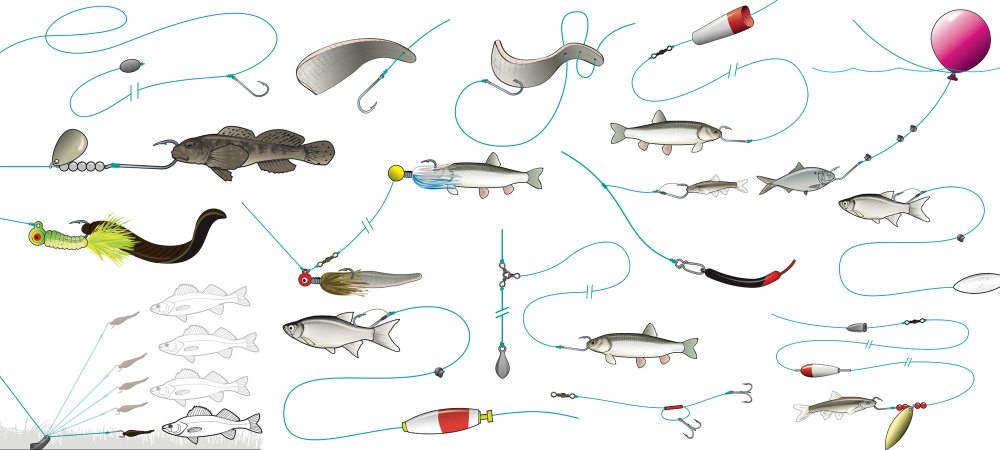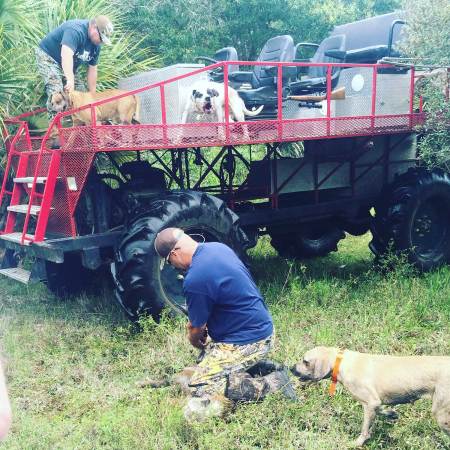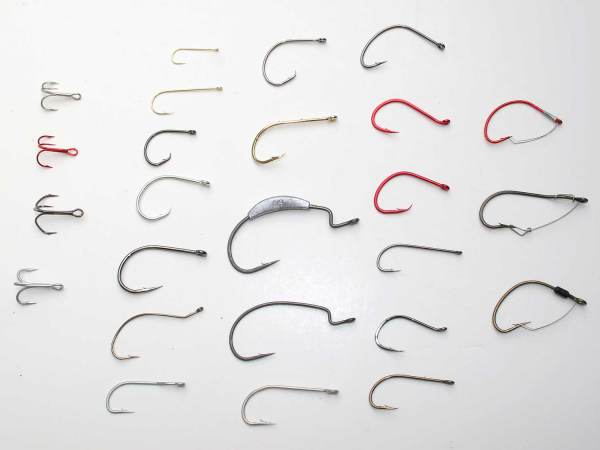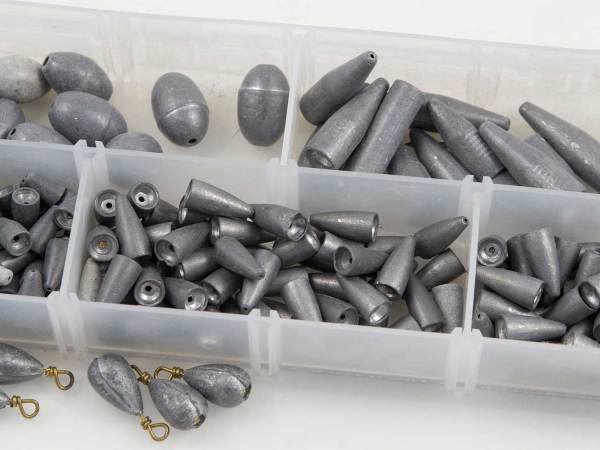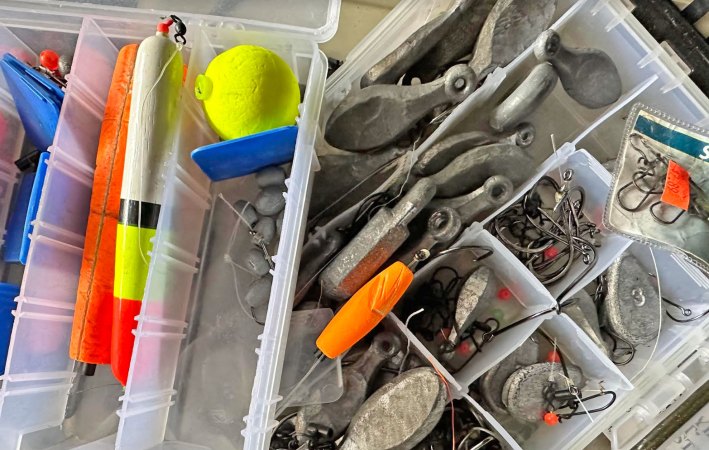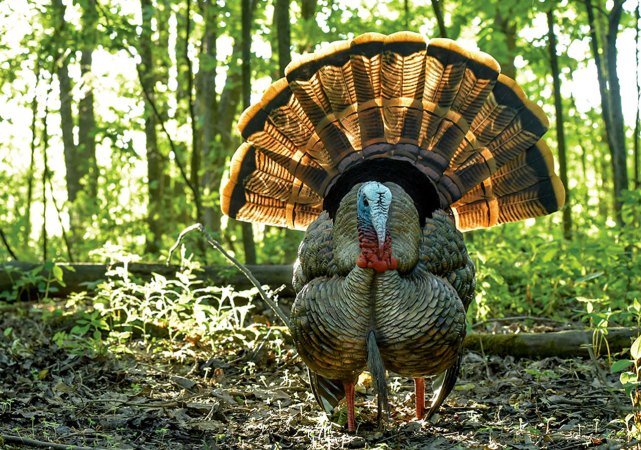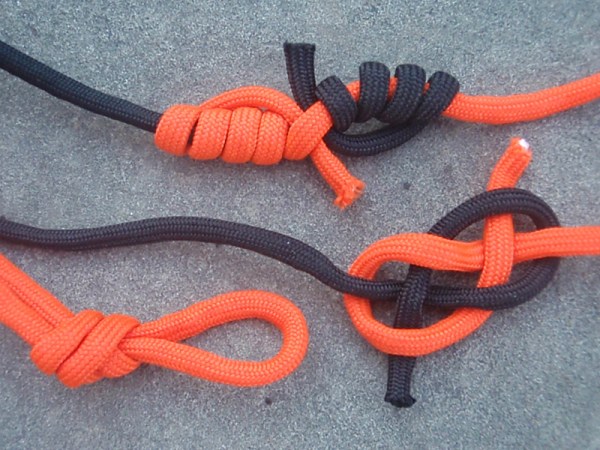We may earn revenue from the products available on this page and participate in affiliate programs. Learn More ›
Rigging decoys isn’t rocket science, but don’t underestimate its importance. Preparing decoys correctly for hunting can mean the difference between a pleasant day on the water and a stressful experience in which keeping your blocks untangled and natural looking becomes more important than the ducks.
The following rigging tips should aid your waterfowling wherever you hunt, whether in flooded timber or in an open bay.
1. Anchors Aweigh
Choose decoy anchors carefully, basing your selection on water depth and bottom composition where you hunt. When hunting diving ducks such as redheads on rough water that’s over 5 or 6 feet deep, use a heavy anchor that can bite into hard bottom to keep your blocks from drifting away in strong winds and rolling waves. A number of commercially made anchors do the job nicely, including mini-mushroom anchors. Pyramid fishing sinkers of 2 to 6 ounces work very well, presuming there is no current, tide or likelihood of high winds where the decoys will be placed.
For shallow, placid water frequented by puddle ducks such as mallards or wigeon, lead strap anchors are excellent and serve double duty in keeping decoy lines untangled. Bend the soft metal strap around the neck of a decoy to hold the line taut. Lead straps work okay in weeds and muck, but the Tanglefree decoy sinker-and-line system is better. Tanglefree products are available from most outlets that sell waterfowling products, including Platte River Waterfowlers, 800-259-6044.
2. Decoy Cordage
If you don’t want to re-rig blocks every season, you’ll need stout, well-made decoy line. Commercial decoy anchor cord isn’t expensive, and it’s made tough to resist abrasions and the debilitating effects of gas and oil. A good substitute is 80- to 200-pound-test monofilament fishing line. Braided line is too limp, but heavy mono is rugged and stiff, making it easy to handle in cold weather.
Line length for puddle-duck decoys should be 4 to 6 feet. For diver decoys in deep water, use 8 to 20-foot lines. Be sure to secure some lines at the head keel holes in some decoys (using a loop knot, or heavy-duty swivel), while securing others at the tail. This makes the blocks appear more lifelike, since your decoys won’t all face the same way on the water.
For shallow-water hunting, some gunners use 4-foot lengths of black, 12-gauge electrical wire for decoy lines. Again, solid wire is better than braided because of its stiffness. Large loop knots should be made at the decoy and at the anchor to accommodate optimum deke movement in wind. This type of wire won’t tangle, so at the end of a hunt it won’t be wound around your decoys. Simply pick up the decoys with the wires dangling below, and place them in the boat. You can sort everything out later.
3. Securing Lines
Loose decoy lines are a nightmare to unwind before daylight. Experienced waterfowlers know the best way to secure a standard decoy line so that it doesn’t come unraveled is to use the “cross” or “X” wrap system, especially when long lines are employed.
Start with a complete line wrap around a decoy neck, then cross the decoy’s back with the line, winding under and around the tail. Then complete the X pattern across the back, around the neck, across the back again to around the tail, and so on. Keep on winding in this X pattern until you reach the anchor at the line end. If it’s a lead strap or other type of special lead weight, fit it to the decoy head. Otherwise strap it to the decoy head with a heavy-duty rubber band or a crosscut piece of bicycle tubing.
Gang Up on Ducks
Hunters who use 100 decoys or so know how time-consuming it is to set out and retrieve blocks. To speed the work, multi-deke or gang rigs were developed. A gang rig is a long, single decoy line that accommodates a number of decoys, usually 6 to 12. While most frequently used in deep, open water for diving duck species, gang rigs also can be used for puddle ducks. It’s easy to make your own gang rig, which simply consists of a heavy 1 1/2- to 3-pound anchor attached to a 100- to 300-foot length of 200- to 300-pound-test line. (Use shorter lines for shallower water, longer lines for deeper water).
The key to easy use is to have the line of a gang rig fitted with cable crimps–the kind big-game anglers use for rigging lures and crimping wire. You’ll need two crimps for every decoy on the gang rig. Squeeze one crimp on the line where the first decoy is to go. Next, slide a large big-game snap swivel or brass decoy swivel onto the line. Then pinch a second crimp to the line an inch or so away from the first. A few feet up the line, add the next set of crimps and swivel. To use it, place the anchor where your decoys should be set. As you slowly pay out the gang-rig line, snap a deke onto each swivel. The crimps will keep the swivels from sliding down the line.
Some hunters also rig a second anchor at the opposite end of the gang rig line to hold their blocks in perfect position. Gang rigs can be extended in the shape of popular spread patterns, especially when three or more lines are used. Gang-rig kits are available from mail-order houses such as Cabela’s (800-237-4444), Bass Pro Shops (800-227-7776) and Mack’s Prairie Wings (800-229-0296). The kit contains all of the components of a gang rig, which includes an anchor, cord to attach the decoys to the anchor, swivels and crimps.


